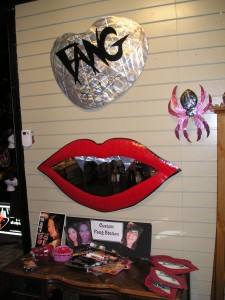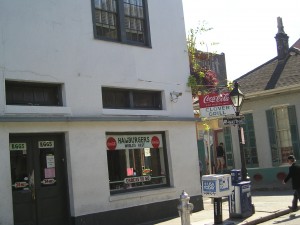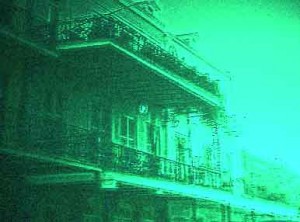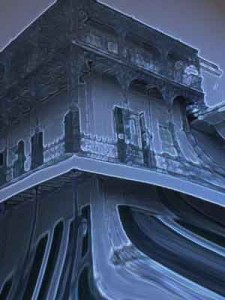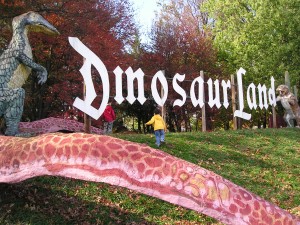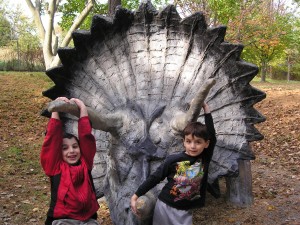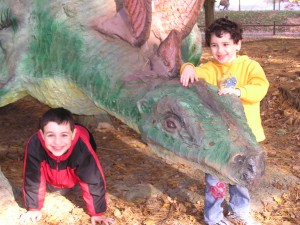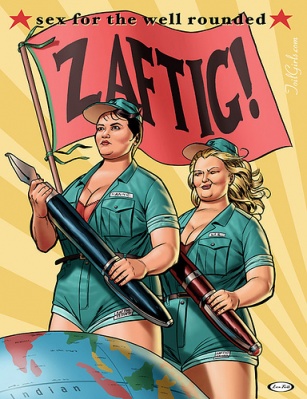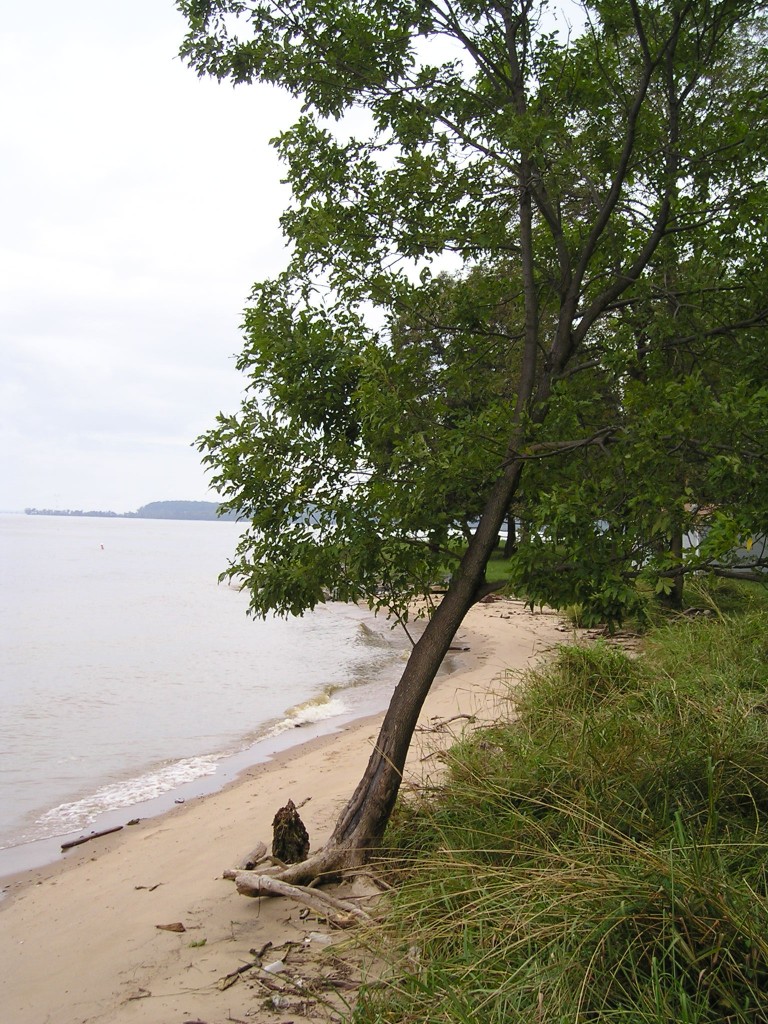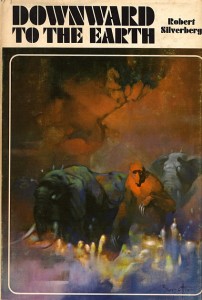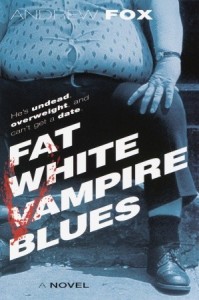Yes, indeed, I know what it means to miss New Orleans…
Not that life in Northern Virginia has been bad. Far from it. In some key ways, life has improved for my family since our move. But no other place can fully replace New Orleans – its people, its neighborhoods, its music, its festivals, its profusion of places to hang out and simply be. I tell people that life is just bigger in New Orleans than it is in other places; the highs there are much loftier than average, and the lows there are very, very low. It is a very romantic place to live. Fabulously fun if you’re single and have few responsibilities; tough as hell if you’re trying to raise a family.
So what’s changed in the past two years?
Everywhere I drove, the streets are getting torn up and remade. General de Gaulle in Algiers on the West Bank. Loyola Avenue and South Rampart Street downtown. South Carrollton Avenue in Uptown. The treacherous old Huey B. Long Bridge over the Mississippi, connecting Elmwood and Bridge City, built during the Depression, is at last being upgraded to the standards of the latter half of the twentieth century (always a terror to drive across due to its narrow lanes, built for the cars of 1935, maybe it’ll be less stomach-shriveling a couple of years from now). Several new library branches are finally replacing old libraries that got flooded out during the Katrina disaster. I saw one going up in my old neighborhood, at the edge of Village Aurora in Algiers, still a steel skeleton but at least progressing. All good news; the tail end of all that FEMA money is finally reaching the streets.
Oak Street in Carrollton is bustling, busier and more full of shops and restaurants than I’ve ever seen it before; it reminds me of what the section of Magazine Street between Louisiana and Washington Avenues used to look like, funky and colorful (before it went a little too upscale). Boutique du Vampyre has moved from Orleans to Toulouse in the French Quarter, gaining a little space in the transition. My favorite “big girls” stripper bar in the Quarter is now a memory, the place where it was on Decatur in the Quarter empty and forlorn-looking. The Maple Street Children’s Books Shop is also gone, apparently done in by the Uptown Borders Books during its brief, two-year existence on St. Charles Avenue. There are now designated bicycle lanes on Carrollton Avenue and St. Charles Avenue.
What hasn’t changed in the past two years?
P.J.’s Coffee on General de Gaulle still serves a great cup of joe, and the gals behind the counter there are still pretty and friendly. Airline Highway (yes, I know it’s been renamed Airline Drive, but I’ll always think of it as Airline Highway) still retains its beat up used cars lots and seedy motels. Octavia Books is still one of the country’s best independent bookstores. More Fun Comics is still more fun than your average comics shop. Kim Son Vietnamese Restaurant still has a menu it would take you a year to sample every item from if you ate one item per visit and went five times a week. The streets throughout New Aurora in Algiers are still in crappy shape and will bust out your transmission and your muffler if you drive over them faster than twenty miles per hour. It is still almost impossible to eat a bad meal in the French Quarter (you can if you try, but you have to really try). The derelict bowling alley on the West Bank Expressway across from the Quality Inn (formerly the Clarion Inn, formerly the Holiday Inn) is still derelict, but all the small businesses in the shabby shopping center surrounding it still seem to be doing a surprisingly darn good business, including Pho Tau Bay Restaurant and Barry Manufacturing (where I bought a terrific sports coat for my birthday). The fire station at the corner of Shirley Avenue and General de Gaulle in Algiers still doesn’t have a repaired roof, more than six years after Hurricane Katrina, despite being only blocks away from the site of the former FEMA Louisiana Transitional Recovery Office.

Birthday dinner at Kim Son: standing are Gwen Moore, Fritz Ziegler, me, and Rob Cerio; seated are Marian Moore and Cherie Cerio
Something else that hasn’t changed? The wonderful willingness of strangers to enter into conversations, and of friends to spend hours talking in any reasonably accommodating space. I reconnected with many old friends during my visit – Fritz Ziegler, Marian Moore, Marc McCandless, Diana Rowland, and Gwen Moore from my old writing workshop group, the one founded by George Alec Effinger back in 1988; and Gulf Coast and Southern fandom friends such as Maxy Pertuit, Frank Schiavo, Raymond Boudreau, Allan Gilbreath, Lee Martindale, and Rebecca Smith. I also made some wonderful new friends at CONtraflow – John Guidry, Michael Scott, Dean Sweatman, Rob and Cherie Cerio, Jennie Faries, and Kalila Smith.
But one of the most endearing and unique qualities of New Orleans and the surrounding region is that you are perfectly capable of meeting (and very likely to meet) new friends, or at least very friendly acquaintances, virtually anywhere you go. I stopped in for a quick lunch at a little French Quarter luncheonette on Dauphine Street where I used to go when I worked at FEMA downtown, only noticing that it had a new name and new ownership after I’d sat down and looked at the menu. I ended up enjoying one of the best sandwiches I’ve ever had the pleasure of putting in my mouth – a redfish slider with dill mayo – and a great conversation with the owner, Billy, who had opened the place, Nosh, only a year earlier. I wanted to buy myself a sport coat to replace one I’d torn a hole in and ended up at Barry Manufacturing at 95 West Bank Expressway, across from my convention hotel. I used to be in sales myself (I sold Saturn cars and trucks for a brief time), so I appreciate a sales job done right. Alphonse at Barry did me right; I saw one jacket I fell in love with, but it fit me like a glove, with no give whatsoever, and Alphonse was honest enough to tell me I’d have problems if I so much as gained a pound. He didn’t have the same jacket one size bigger, darn it, but I liked his stock, and I liked his prices, I liked him, so I looked until I found another jacket I liked almost as much, and that fit me much better. Sale!
And then there was Coffee &, a little coffee and donut shop on Manhattan Boulevard in Marrero that I’d driven past hundreds of times when I lived on the West Bank. I’d never gotten around to stopping in there, even though I’m a big coffee drinker; I think their tinted windows sort of put me off, making me dubious of what I’d find if I opened their door. But Saturday morning I found myself in their strip center and hungry for breakfast and desperate for coffee, so I said, “What the hell?” And you know what? I loved the place! As soon as I walked in and saw the counter and the counter staff and the selection of donuts and the signs listing the breakfast specials, I said to myself, “Ooohh, nice, I like this joint…” I sat at the counter near the door into the kitchen, where I could watch the staff mix the batter for the donuts. I got scrambled eggs and hash browns and coffee (with endless refills, of course) for less than five bucks. Plus, I had a super time kibitzing with the staff. You know you’re in a good spot when one of the customers sitting next to you is an employee, there during her own time, who came in for coffee and breakfast because she likes the place and loves the people who work there. A neat bonus was that Coffee & sells coffee travel mugs exactly of the type I’ve been looking for – all plastic, so safe for the microwave, with a sturdy closable top that won’t leak on me. Liked ‘em so much I bought two to bring back to Virginia with me (the second one for Dara, who deserved a new coffee mug).
My only disappointments with my trip were that I wasn’t able to bring my family down with me – all three of my boys were born in New Orleans – and that I couldn’t squeeze in more time to visit with my mother-in-law and my cousins than I did. And there were old favorite bookstores and coffeehouses I didn’t get to. I’ll just have to find excuses for more trips, I guess. The place still feels like home, and I suspect it always will.



